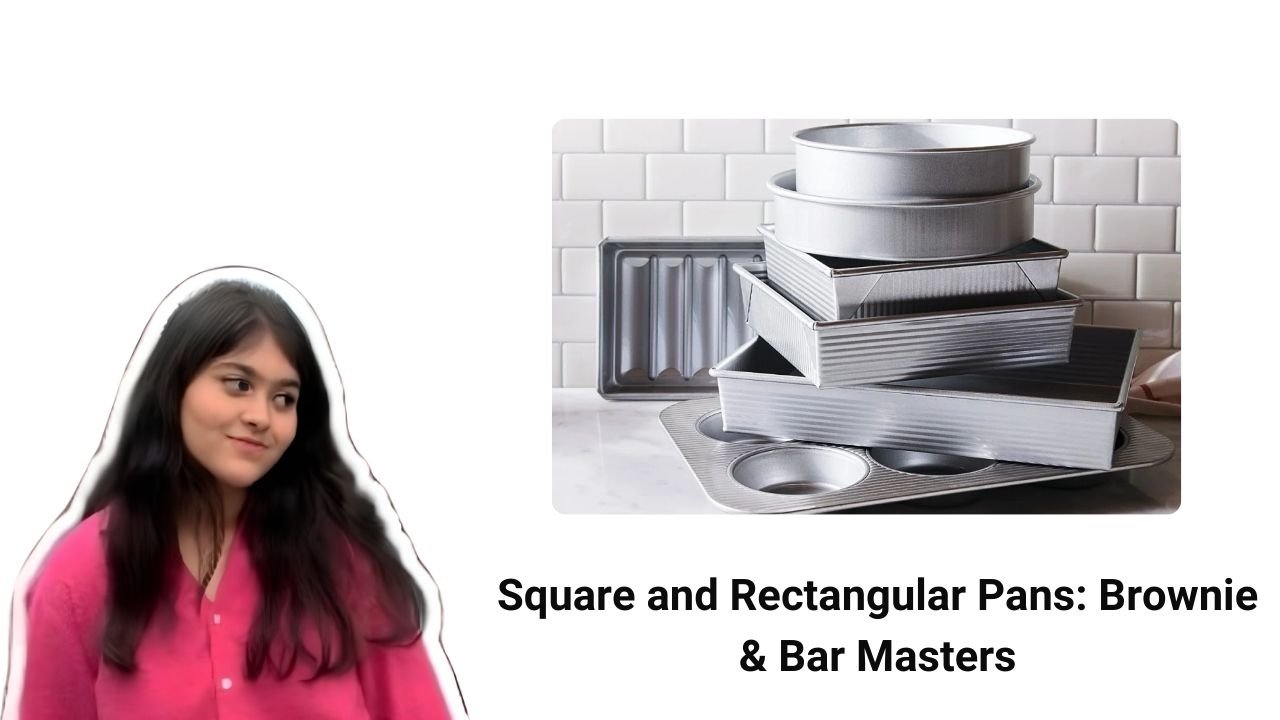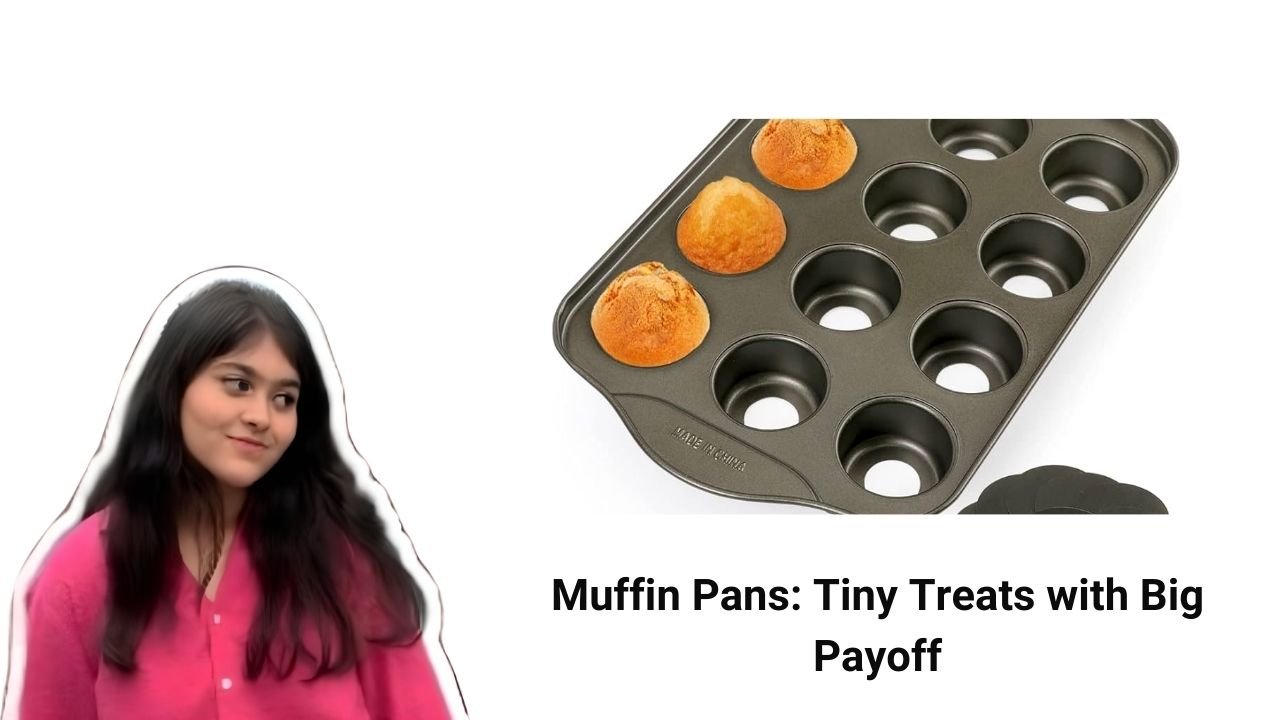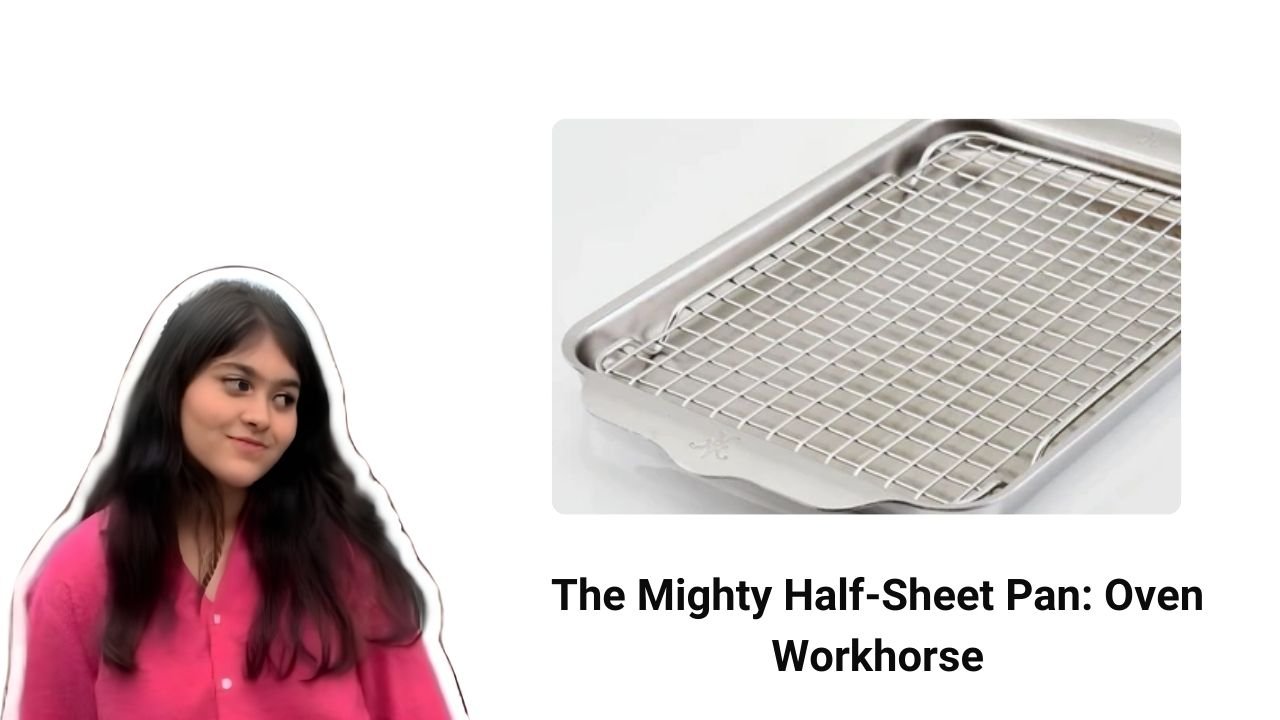Getting into baking can feel like learning a new language. I remember when I started—I had one warped cookie sheet, a single loaf pan, and big dreams of making the perfect chocolate cake. But like any hobby, the right tools make all the difference. That’s why I’ve created this must-have list of the best baking pans for beginners. Whether you’re whipping up brownies for a potluck or testing your first banana bread recipe, having the right bakeware makes the process smoother and a lot more fun.
So, if you’re building your first collection or upgrading old pieces, this guide walks you through every essential pan, why it matters, and what to look for—based on real experience, not just theory. Ready to stock your kitchen like a pro? Let’s dive into the pans I wish I’d had when I first preheated the oven.
Round Cake Pans: Your Layer Cake Heroes
If you’ve ever dreamed of baking your own birthday cake or tackling a Victoria sponge, 8 or 9-inch round cake pans are where to start. These are the backbone of cake baking. Every time I make a layered carrot cake or a fluffy vanilla sponge, I reach for my round pans—and yes, I always use two.
Using a pair lets you bake both layers at the same time, keeping the height and texture even. There’s a reason pro bakers—and King Arthur Baking—suggest having more than one. It’s just more efficient and avoids uneven layers.
Look for pans with a depth of at least 2 inches, especially if you’re working with rising batters. Shallow pans might overflow, making a mess in your oven (been there, cleaned that). Aluminum or heavy-duty non-stick options work great here. They release cakes beautifully and bake evenly, thanks to excellent heat conductivity.
Here’s a quick comparison of round cake pan sizes:
| Pan Size | Ideal For | Why It’s Great |
| 8-inch | Dense cakes (carrot, pound) | Taller rise and richer texture |
| 9-inch | Lighter sponges | More room for batter and easier layering |
In short, if cake is in your baking future, round cake pans belong at the top of your list. I personally use Nordic Ware’s round pans. They’re solid, reliable, and part of the best bakeware brands you’ll see mentioned again and again.
Square and Rectangular Pans: Brownie & Bar Masters

When someone asks me where to start, I always say: “Buy a 9×9-inch square pan and a 9×13-inch rectangular pan.” These two cover everything from fudgy brownies to lasagna. I call them the “midweek warriors”—they’re the ones you’ll reach for the most when you need something quick, easy, and foolproof.
The 9×9-inch pan is your go-to for brownies, blondies, lemon bars, and smaller cakes. Its shape helps bake thicker items evenly without drying them out. I’ve made dozens of small birthday cakes in mine, especially when baking for a small group.
The 9×13-inch pan, on the other hand, is a multitasker. I use it for sheet cakes, casseroles, cobblers, and even roasting vegetables. This size is especially good when you’re batch baking for events or family dinners.
Here’s how they compare:
| Pan Type | Best For | Pro Tip |
| 9×9 Square | Brownies, bars, small cakes | Use parchment for clean edges |
| 9×13 Rectangle | Sheet cakes, casseroles | Great for layered bakes and doubling recipes |
Go for sturdy aluminum or carbon steel pans—they provide consistent heat and a beautiful golden crust. A good non-stick coating also helps, but always line with parchment for the cleanest lift. If you’re on Amazon, the Best baking pans for beginners my must have list Amazon is filled with budget-friendly options that work well.
Loaf Pans: Banana Bread’s Best Friend
A 9×5-inch loaf pan (or the slightly smaller 8.5×4.5-inch) is essential for every beginner. I use mine almost every week—for banana bread, pumpkin loaf, lemon drizzle cake, and even savory meatloaf. There’s something cozy about loaf-style bakes, and it’s an easy format to get right.
Choosing the right loaf pan size matters more than you’d think. Too small, and your batter overflows. Too big, and the loaf spreads too thin. I’ve found the 9×5 to be the most forgiving for most recipes.
Material plays a big role here. I like carbon steel for even browning, and many of the best bakeware sets include one loaf pan for good reason. It gives your baked goods that golden, bakery-style crust—something every beginner baker deserves to experience early on.
Some helpful tips:
- Always grease your loaf pan, even if it’s non-stick.
- If your recipe is heavy (think banana or zucchini bread), line with parchment.
- Let your loaf cool at least 10 minutes before removing—it helps set the structure.
If you’re aiming for a no-fuss start to your baking journey, a good loaf pan is a must. It’s humble, yes, but totally essential.
Muffin Pans: Tiny Treats with Big Payoff

I’ll say it right now: a 12-cup muffin pan changed the game for me. From blueberry muffins to mini frittatas and cupcakes, this is a pan I use almost as often as my kettle. If you’re a beginner, muffin pans are one of the most fun and versatile tools to start with.
The great part? They give you built-in portion control. Whether you’re baking for yourself, a partner, or a whole classroom, muffin tins help you scale recipes up or down easily.
Go for a heavy-duty non-stick version or one made of aluminized steel. I also recommend using silicone cupcake liners for less mess and easy cleanup. Even if you’re not into sweets, muffin pans are amazing for savory bakes like egg bites, mini quiches, and meatloaf cups.
Here’s what to consider:
| Feature | Why It Matters |
| 12-cup standard size | Works with most recipes |
| Non-stick or aluminum | Easier release, even baking |
| Dishwasher safe | Speeds up cleanup, especially for beginners |
Muffin tins are often overlooked, but they offer some of the best return on investment when you’re just starting out.
The Mighty Half-Sheet Pan: Oven Workhorse

If I could only keep one pan, it’d be my half-sheet pan. Seriously. It’s the true jack-of-all-trades. I use it for roasting veggies, baking cookies, making granola, sheet pan dinners—you name it. For beginners, investing in a high-quality baking sheet for oven use is non-negotiable.
Look for a 13×18-inch aluminum sheet pan with rolled edges to prevent warping. A reinforced rim makes a huge difference, especially when you’re pulling a full tray of roasted potatoes or a bubbling lasagna from the oven.
Here’s a breakdown of features you’ll want:
| Feature | Benefit |
| Uncoated aluminum | Even heat, better browning |
| Rolled steel rim | Prevents warping at high temps |
| Rust-resistant | Lasts longer, better long-term investment |
I’ve had my Nordic Ware baking pans for years, and they’re still going strong. Just avoid acidic foods directly on aluminum if it’s uncoated—they can cause discoloration. But overall, this pan is the backbone of any beginner’s setup
Material Matters: Picking the Right Pan for the Job
As a beginner, it’s easy to get overwhelmed by all the types of baking pans with names and materials. Should you get aluminum, non-stick, carbon steel, or stainless steel? Each has its strengths, and knowing when to use what will save you a lot of frustration—and a few burnt bottoms.
Aluminum is my go-to for nearly everything. It heats quickly and evenly, making it a fantastic choice for cookies, cakes, and muffins. I especially recommend uncoated aluminum pans for their heat performance. They’ll give you golden edges and even bakes every time. Just remember to line them if you’re baking something sticky or acidic.
Non-stick pans are incredibly beginner-friendly. They’re easy to clean and great for delicate baked goods like muffins or cupcakes. But there’s a catch—non-stick coatings can wear down over time, especially if you use metal utensils or run them through the dishwasher too often. If you’re buying non-stick, treat them gently and hand wash when you can.
Then there’s carbon steel, which I discovered later in my baking journey. This material gives baked goods a deep golden finish and holds heat longer. It’s especially good for crusty breads or when you want a really caramelized edge on your brownies. Just be aware: it might need seasoning, much like cast iron.
Lastly, stainless steel is durable but not ideal for baking unless you’re roasting or cooking savory dishes. It doesn’t conduct heat as well, so you may end up with uneven bakes.
Here’s a comparison table to help break it down:
| Material | Best For | Pros | Cons |
| Aluminum | Cakes, cookies, muffins | Even heat, light weight | Can discolor with acidic foods |
| Non-stick | Cupcakes, muffins, delicate recipes | Easy release, minimal cleanup | Coating can wear off |
| Carbon Steel | Breads, brownies, crusty edges | Golden crust, great heat retention | May need seasoning, heavier |
| Stainless Steel | Roasting, casseroles | Durable, versatile | Uneven baking, slow heat conduction |
Choose your material based on the recipes you love most. When in doubt, aluminum or carbon steel are safe bets. They’re both featured in the best baking pan material category by pro bakers and reviewers alike.
Tips for Choosing the Right Pan (Before You Hit “Buy”)
Before you go clicking through Amazon’s best bakeware brands, it’s smart to pause and consider a few things. Buying baking pans isn’t just about the shape or size. Here are my go-to tips for first-time buyers:
- Check the depth. For cakes, you want pans that are at least 2 inches deep. This gives the batter room to rise without spilling over.
- Mind the material. Think about what you’ll bake most. If you’re into cakes, aluminum is a great choice. For breads, look for carbon steel or darker pans for a better crust.
- Stick with standard sizes. Most recipes are written for classic dimensions like 9×13, 9×9, 8” or 9” rounds, and half-sheet pans. Start with these to avoid conversion headaches.
- Avoid warped pans. A pan that bends at high heat will mess up your bakes. Look for ones with reinforced rims or rolled edges. Nordic Ware is especially reliable here.
- Buy in pairs. Especially for cake pans. Having two of the same size lets you bake layered cakes at once, keeping things even and efficient.
And a bonus tip? Use parchment paper. It’s a beginner baker’s best friend. It helps prevent sticking, makes cleanup easier, and can extend the life of your pans. Win-win-win.
Bonus Picks: Building a Simple Bakeware Set
You don’t need a dozen pans to start baking. In fact, too many tools can actually slow you down. Instead, focus on a basic bakeware set that covers multiple needs. The ones I recommend below are perfect for those just getting started:
- 2 Round Cake Pans (8 or 9 inch)
- 1 9×13-inch Rectangular Pan
- 1 9×9-inch Square Pan
- 1 9×5-inch Loaf Pan
- 1 12-Cup Muffin Tin
- 1 Half-Sheet Pan
This setup gives you everything you need for cakes, cookies, muffins, brownies, quick breads, and even savory dishes like casseroles and roasted veggies. You can always add specialty pans—like bundt or springform—later as your skills grow.
I also recommend checking out baking pans with names and pictures if you’re a visual learner. Many websites have detailed breakdowns, which makes it easier to spot what you need while shopping.
My Go-To Brands (Tried, Tested, and Trusted)
When it comes to best bakeware brands, I’ve tested a lot. Here are my top picks for beginner bakers who want long-lasting quality without breaking the bank:
- Nordic Ware – Legendary for a reason. Their aluminum pans never warp, bake evenly, and last forever. Great for half-sheet pans, round cake pans, and muffin tins.
- USA Pan – Known for non-stick performance and professional-level quality. Their loaf pans are top-tier.
- Wilton – Super accessible and perfect for beginners. Their best bakeware sets are affordable and reliable.
- OXO Good Grips – Great for non-stick fans. Their Pro series sheet pans are heavy-duty with a grooved base that helps air flow evenly.
These are brands I’ve personally used over the years. They’ve helped me grow from baking boxed brownies to homemade layer cakes and artisan-style bread.
Wrapping It Up: Your First Step into the Baking World
Starting your baking journey is exciting, but like any good recipe, it’s easier with the right ingredients—and that includes the pans. The truth is, you don’t need a massive collection. Just a few solid basics will take you far. The Best Baking Pans for Beginners: My Must-Have List isn’t about collecting stuff. It’s about making your kitchen feel ready for anything, whether that’s a spontaneous Sunday cake or your first batch of muffins.
Here’s a quick summary:
- Start with core pans: round cake pans, loaf pan, square pan, 9×13 pan, muffin tin, and a half-sheet pan.
- Choose quality materials: aluminum for even heat, non-stick for convenience, carbon steel for that golden crust.
- Stick to trusted brands like Nordic Ware, USA Pan, and Wilton.
- Think ahead: Choose sizes and materials that match what you want to bake most often.
And above all—have fun. Baking is equal parts science and joy. The more you bake, the more you learn. And with these pans, you’ll be set up for success from your very first recipe.

Hey, I’m Nandoza Ahammad, passionate food enthusiast and creator of narzcookingcave.com, shares delicious recipes and cooking tips worldwide.
